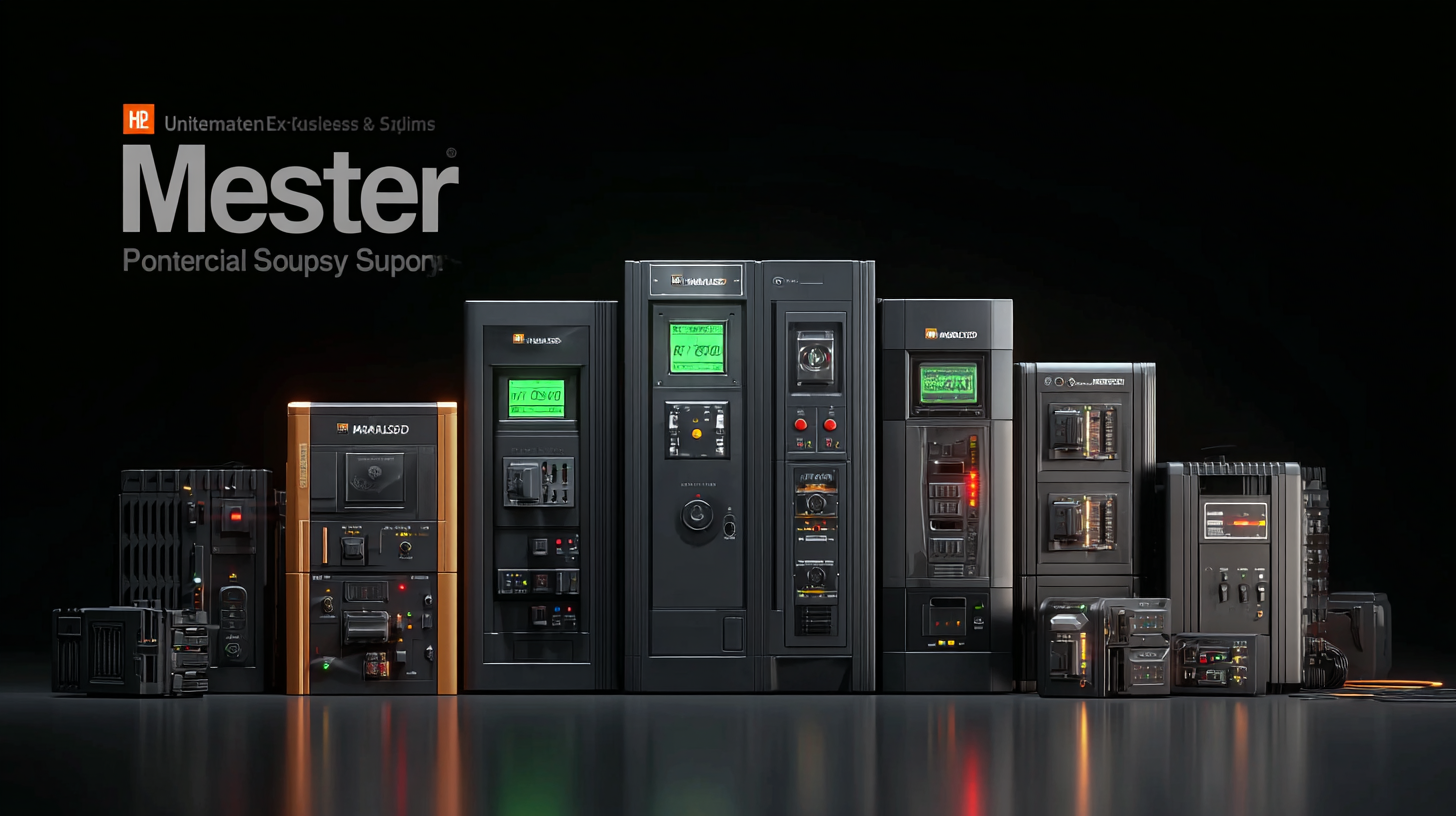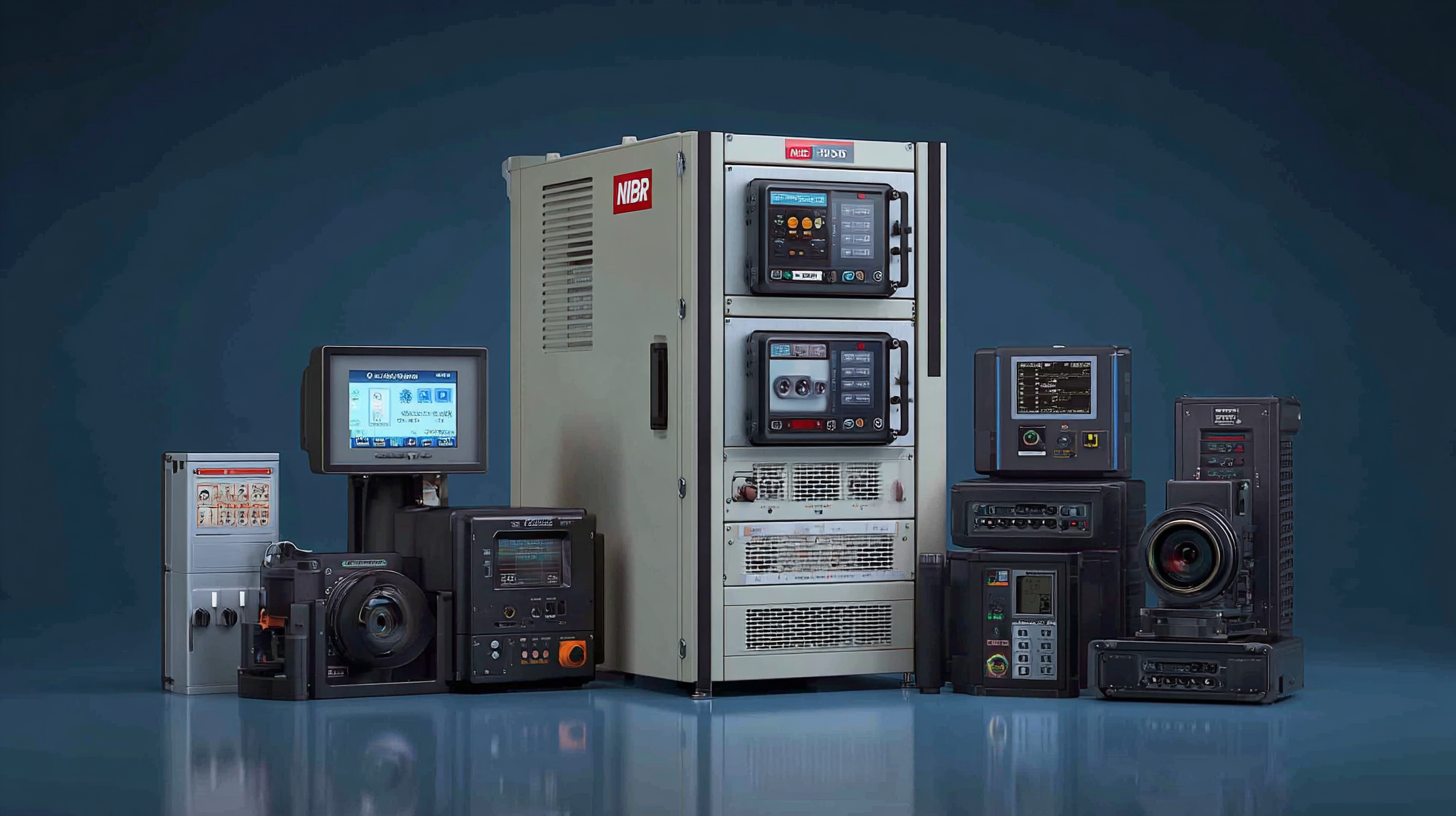Blog
Mastering the Essentials of Best Uninterruptible Power Supply for Global Buyers
In the rapidly evolving landscape of technology, the Uninterruptible Power Supply (UPS) market is poised for significant growth, projected to reach USD 15.8 billion by 2025, according to industry reports. This surge is driven by the increasing need for reliable power backup solutions in sectors such as healthcare, telecommunications, and data centers, where even a momentary power interruption can lead to substantial losses. As global buyers seek to safeguard their operations against power outages and fluctuations, mastering the essentials of selecting the best UPS is more crucial than ever.

This blog aims to provide a comprehensive guide, exploring the latest industry trends and offering actionable insights on how to choose the most effective UPS systems for various applications. Join us as we delve into the critical factors that define a quality UPS and how businesses can stay ahead in this dynamic market.
Understanding Different Types of Uninterruptible Power Supplies and Their Applications
Uninterruptible Power Supplies (UPS) are crucial in ensuring the continuous operation of electrical devices during power outages. There are several types of UPS systems available, each designed for specific applications. The most common types are Offline, Line-Interactive, and Online UPS. According to a report by MarketsandMarkets, the global UPS market is expected to grow from USD 9 billion in 2021 to USD 14 billion by 2026, indicating a rising demand for reliable power solutions across various sectors.
Offline UPS systems are ideal for home use and small businesses, as they provide basic battery backup and surge protection. Line-Interactive UPS units, on the other hand, offer additional features like voltage regulation and are better suited for environments with frequent voltage fluctuations. Finally, Online UPS systems are designed for mission-critical applications, providing continuous power and the highest level of protection for sensitive equipment. According to a study published by Allied Market Research, the Online UPS segment is projected to witness significant growth, driven by the increasing reliance on cloud computing and data centers.
**Tip:** When selecting a UPS, consider the total wattage of devices you need to protect and choose a model with a capacity exceeding that requirement to ensure optimal performance. Additionally, regularly test your UPS battery to maintain its longevity and reliability.
Understanding Different Types of Uninterruptible Power Supplies and Their Applications
Common Problems Faced with Uninterruptible Power Supplies and How to Solve Them
Uninterruptible Power Supplies (UPS) are essential for maintaining operational continuity in data centers. However, several common issues can compromise their effectiveness. One frequent problem is inadequate power capacity, which occurs when the UPS cannot handle the load during peak usage, leading to potential failures. To mitigate this, it’s crucial for buyers to accurately assess their power requirements and consider future scalability when selecting a UPS system.
Another significant concern is battery reliability. Over time, batteries may degrade, which can reduce the UPS's performance and increase the risk of downtime. Regular maintenance and monitoring are vital to identify the health of batteries early. Implementing advanced battery monitoring technologies can help track performance and notify users of necessary replacements before issues arise.
As the global demand for UPS systems grows, especially with the rise of data center outages, understanding and addressing these common problems will enable businesses to ensure their infrastructure remains resilient against power supply challenges. With a strategic approach, organizations can effectively enhance the reliability of their power management systems, ultimately leading to increased operational efficiency.

Key Features to Consider When Choosing the Right UPS for Your Needs
When selecting the right uninterruptible power supply (UPS) for your needs, there are several key features that must be taken into account to ensure optimal performance and reliability. According to a recent report by MarketsandMarkets, the global UPS market is projected to reach $17.2 billion by 2026, highlighting the growing importance of mitigated downtime in both residential and commercial sectors.
One crucial feature to consider is the power capacity of the UPS. It is essential to match the UPS capacity with the load requirements of your devices; a rule of thumb is to select a UPS that can handle 20% more than the total wattage of the connected equipment. Additionally, the type of UPS—Standby, Line-Interactive, or Online—plays a pivotal role in application suitability. Line-Interactive UPS systems, often recommended for small to medium-sized businesses, can provide significant voltage regulation and are highly efficient, as indicated by a report from TechNavio, which noted their increasing adoption in the market due to their cost-effectiveness and reliability.
Battery runtime is another critical component when determining which UPS is right for you. The average battery life ranges from 3 to 5 years, but this can vary based on usage and environmental conditions. A study from ResearchAndMarkets suggests that ensuring proper battery maintenance and opting for extendable battery solutions can prolong your UPS's effectiveness, ultimately safeguarding your crucial electronic equipment against unexpected power disruptions.

Maintenance Tips to Maximize the Lifespan of Your Uninterruptible Power Supply
One of the key factors in maximizing the lifespan of your Uninterruptible Power Supply (UPS) is regular maintenance. According to the International Society of Automation (ISA), proper maintenance can enhance a UPS's life expectancy by up to 30%. Regularly inspect the battery's health, ensuring that the electrolyte levels are appropriate, especially in lead-acid batteries.
Additionally, keeping the UPS clean and free from dust can prevent overheating, which is one of the leading causes of power supply failures.
Furthermore, conducting routine tests on the UPS system can identify potential issues before they become critical. The IEEE 487 standard recommends testing the batteries at least annually and replacing them every 3 to 5 years, depending on the type used.
Implementing a structured maintenance program not only boosts reliability but also maintains efficiency; data from the Power Sources Manufacturers Association (PSMA) suggests that well-maintained UPS systems can operate at over 95% efficiency, ultimately saving costs in energy consumption and reducing the risk of downtime in critical applications.
Identifying Red Flags: When to Replace Your Uninterruptible Power Supply
When it comes to ensuring a seamless power supply for your sensitive equipment, recognizing the red flags that indicate it's time to replace your Uninterruptible Power Supply (UPS) is essential. One of the most noticeable signs is the age of your UPS. Typically, a UPS has a lifespan of about 3 to 5 years; if you notice that your unit is approaching this age, it may be time to consider a replacement. Additionally, if the battery warning lights are consistently triggered or if the device fails to provide adequate backup time, these are clear indicators that it’s no longer functioning efficiently.
Tip: Always monitor the performance of your UPS. Regularly check the battery health and take note of any unusual noises or overheating. If your UPS frequently overheats or emits a burning smell, it’s crucial to act quickly and replace it to prevent potential accidents or equipment damage.
Another important consideration is the technology within your UPS. As industries evolve—much like the anticipated industrial revolution in regions like Lalru, Punjab—modern UPS systems are equipped with advanced features that enhance efficiency and reliability. Upgrading to a newer model could provide technological advantages that support your operations better than older units.
Tip: When selecting a replacement UPS, focus on models that offer features such as smart alerts, energy-saving modes, and compatibility with newer digital equipment. These enhancements can help you stay ahead in an increasingly tech-driven landscape.
